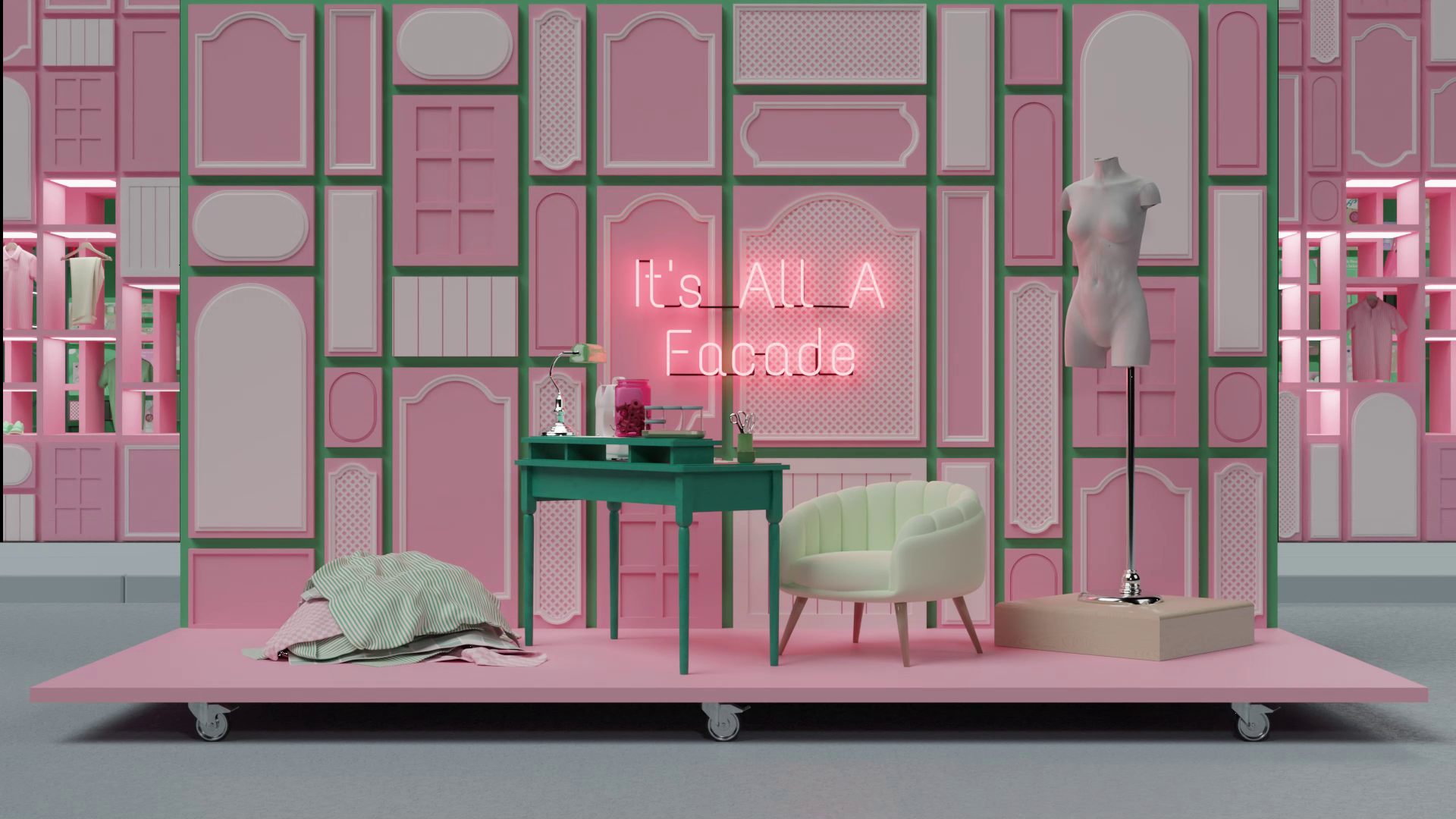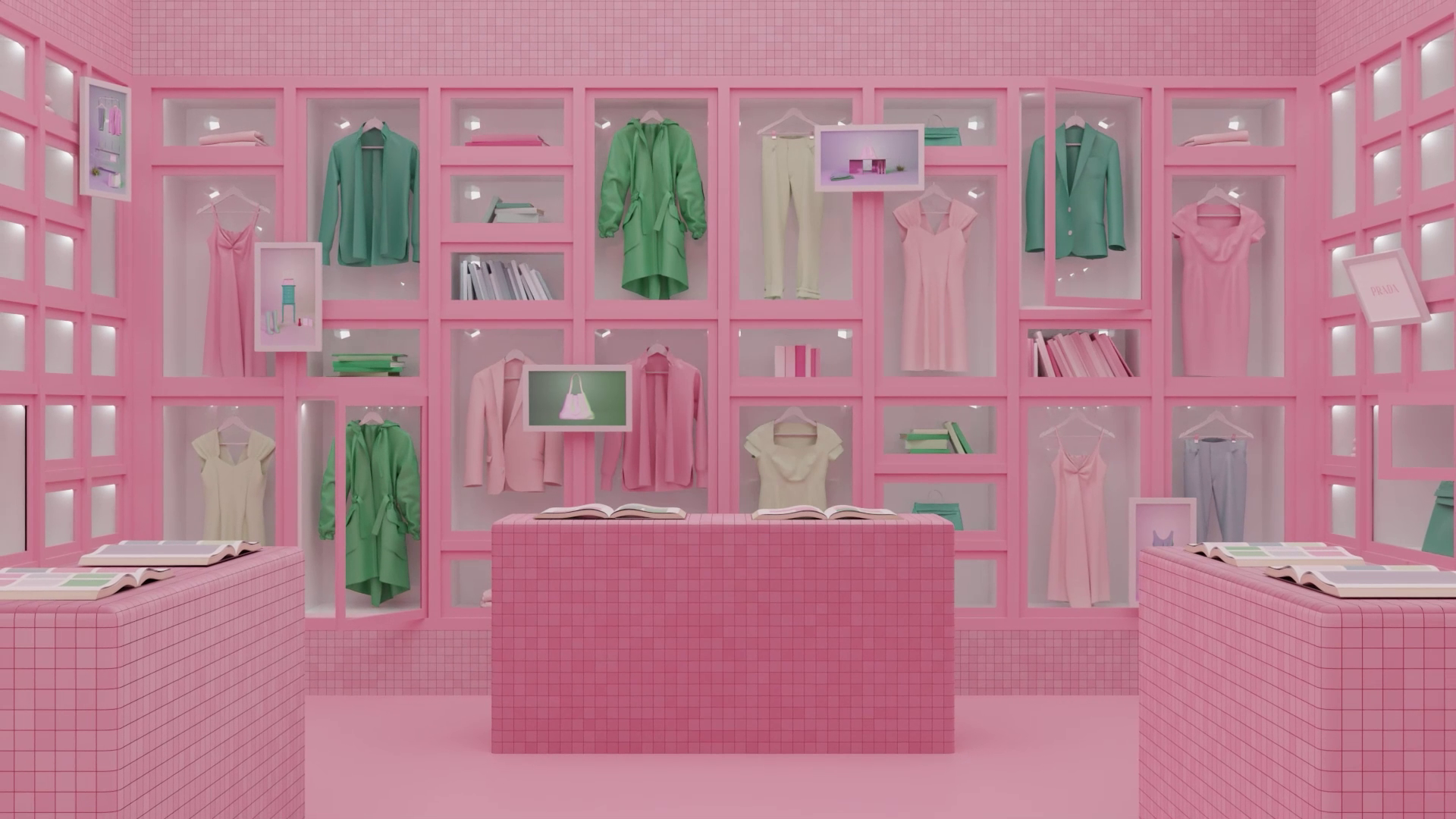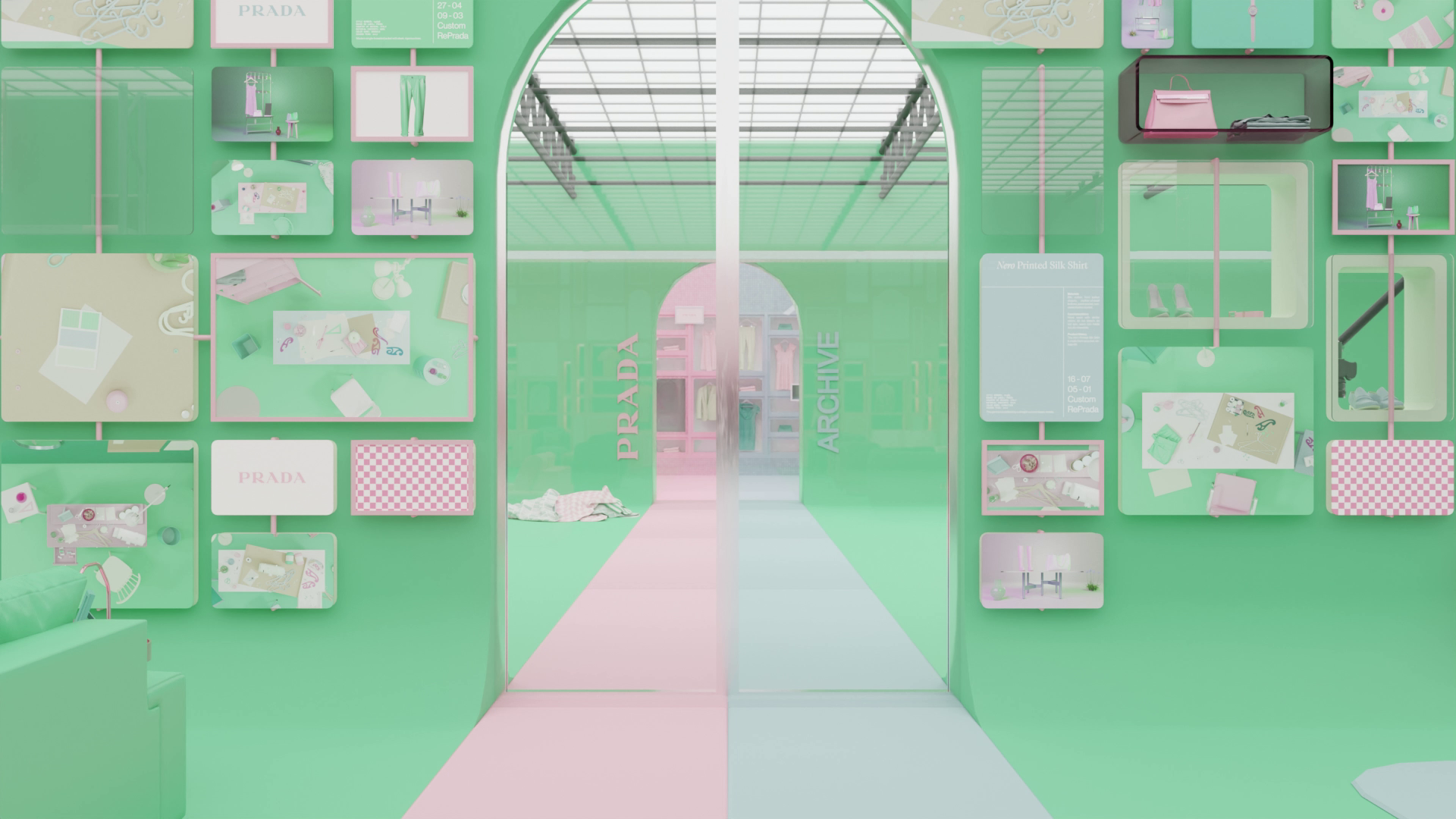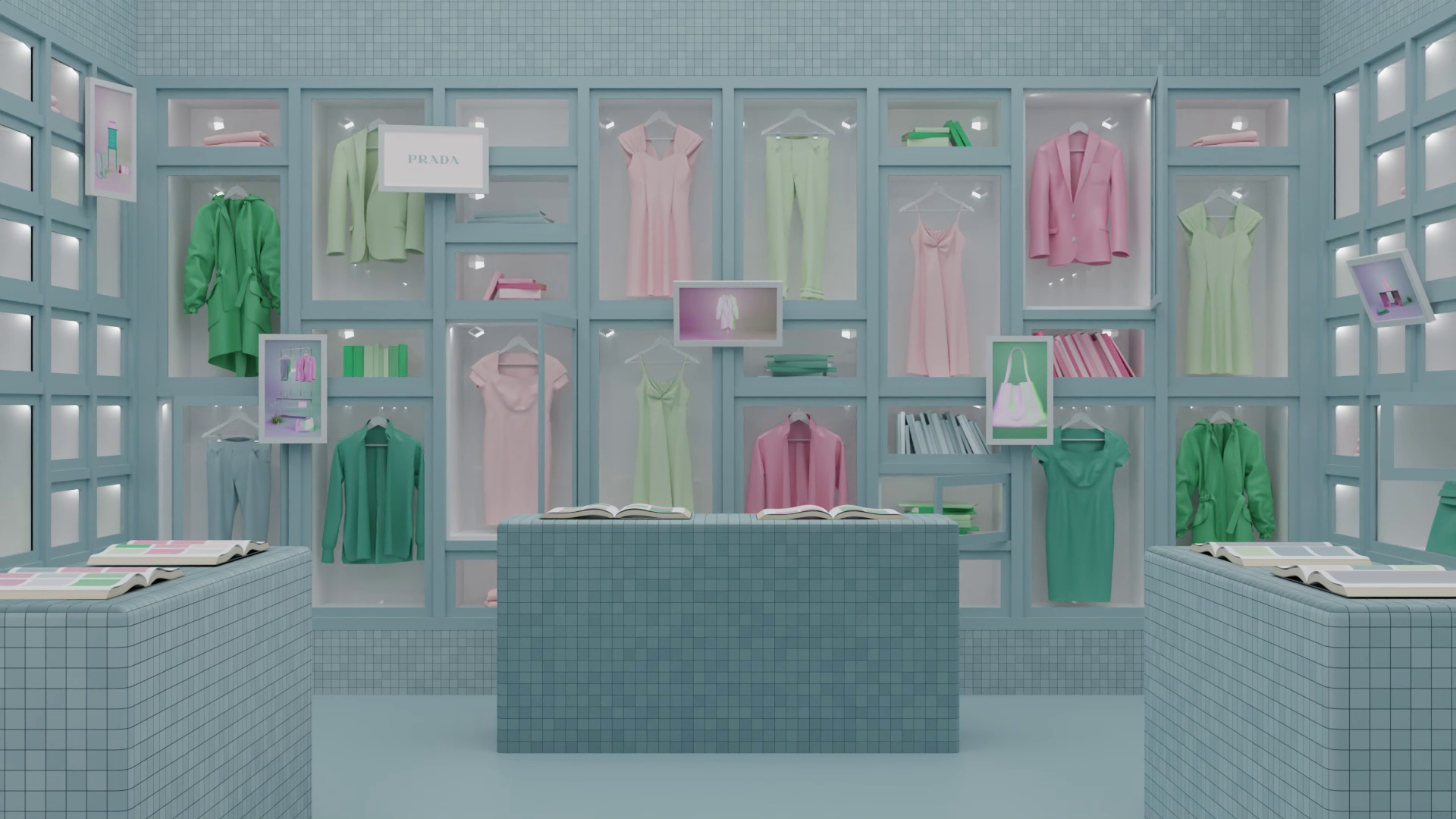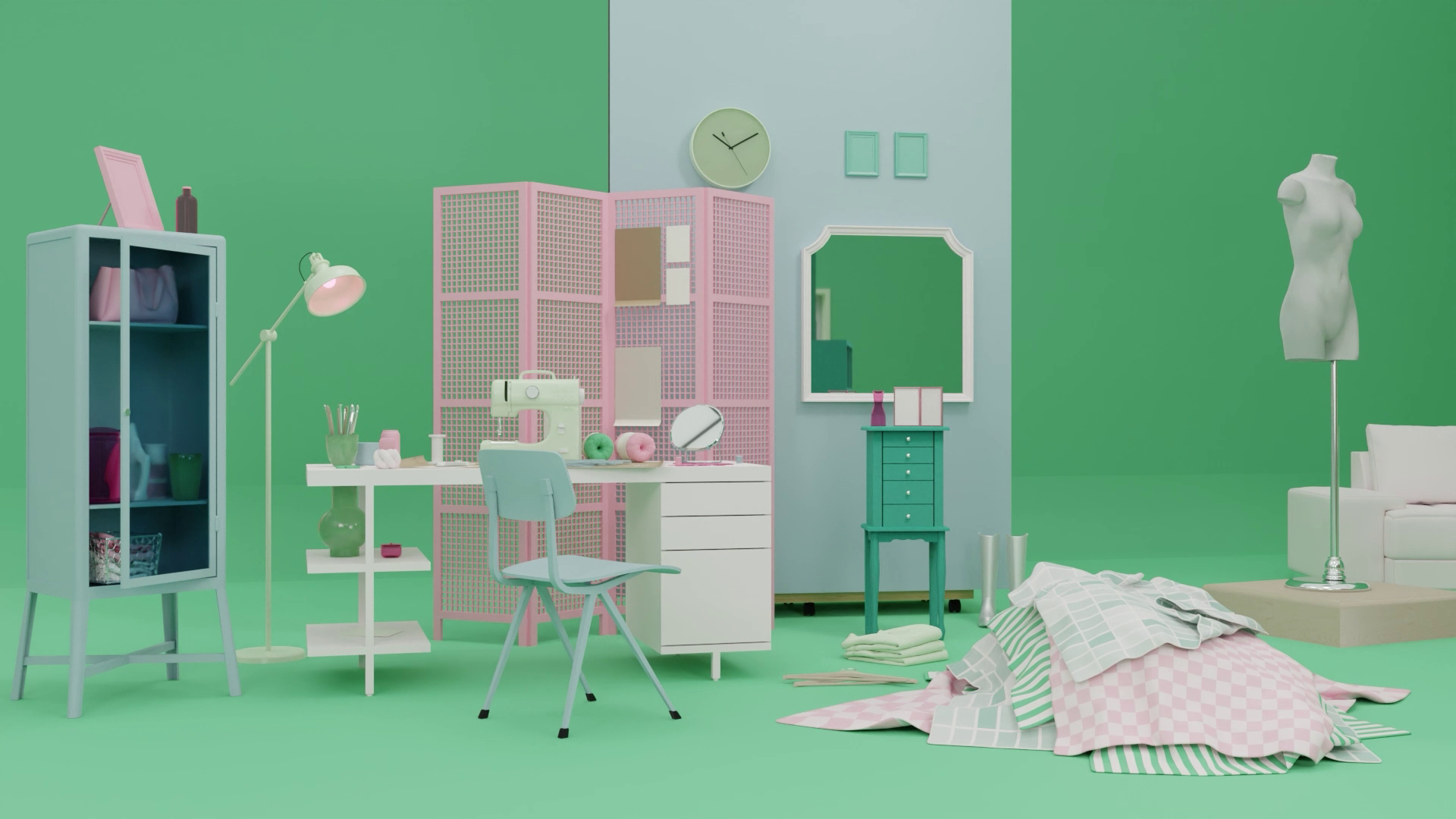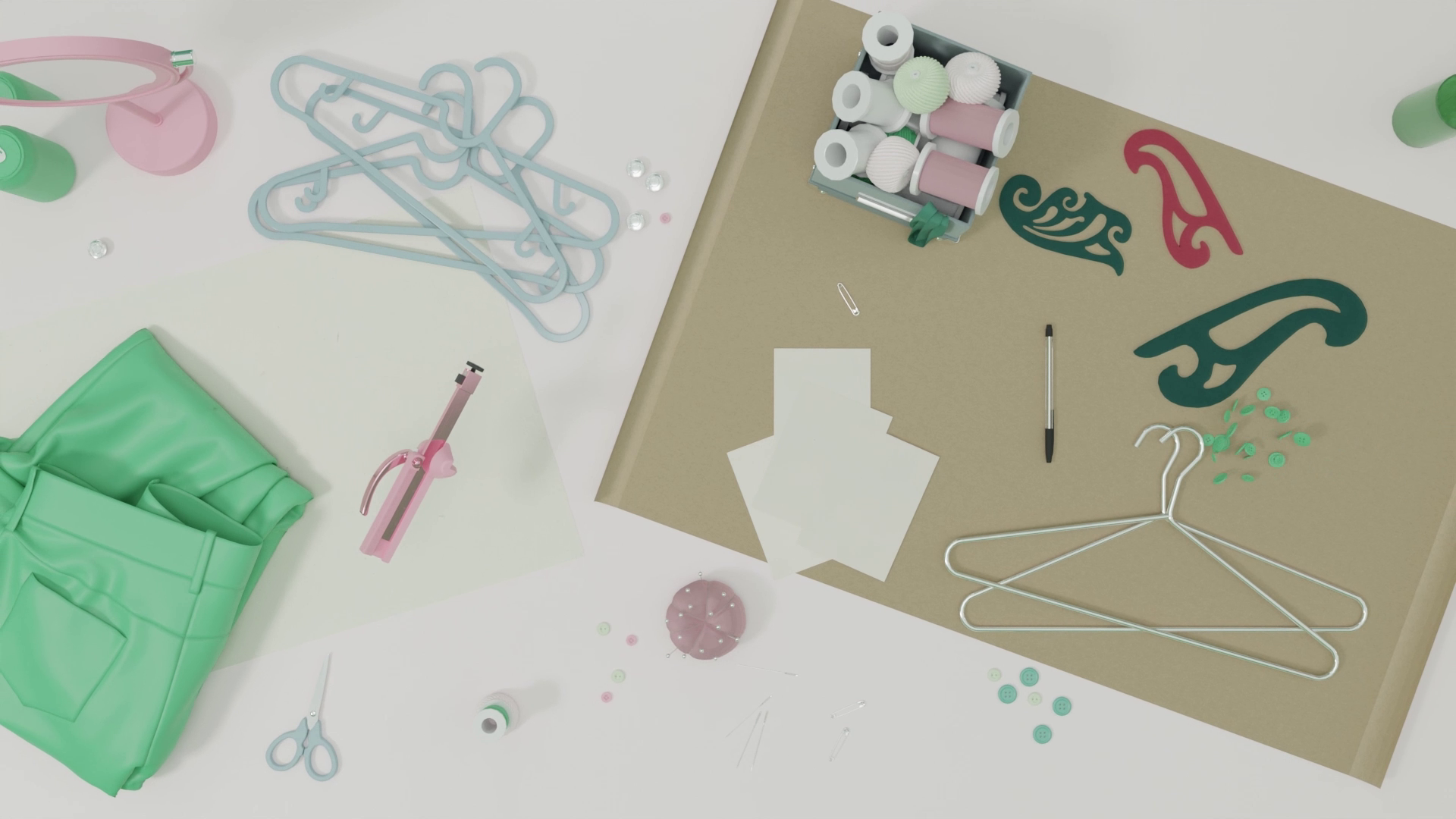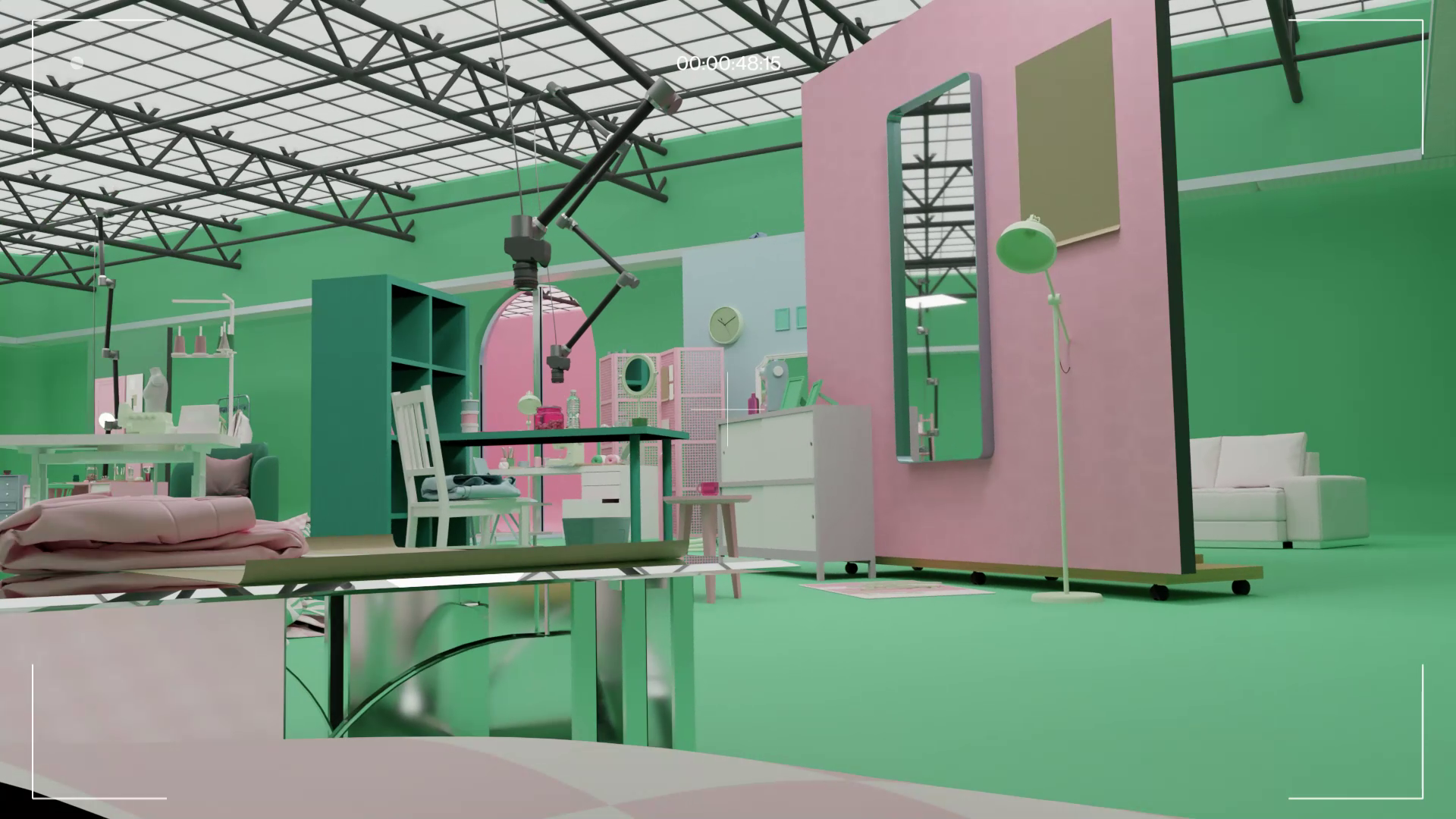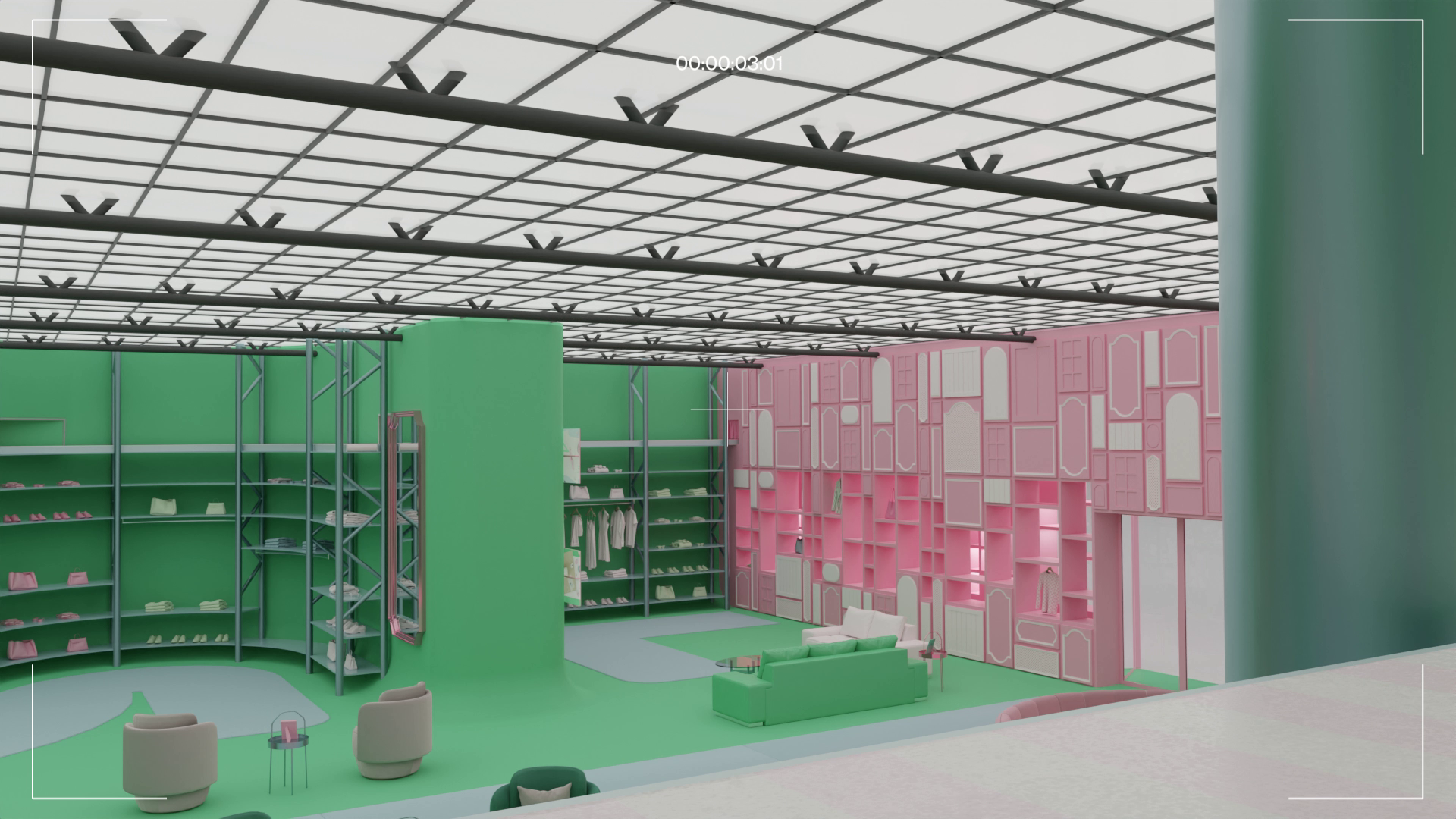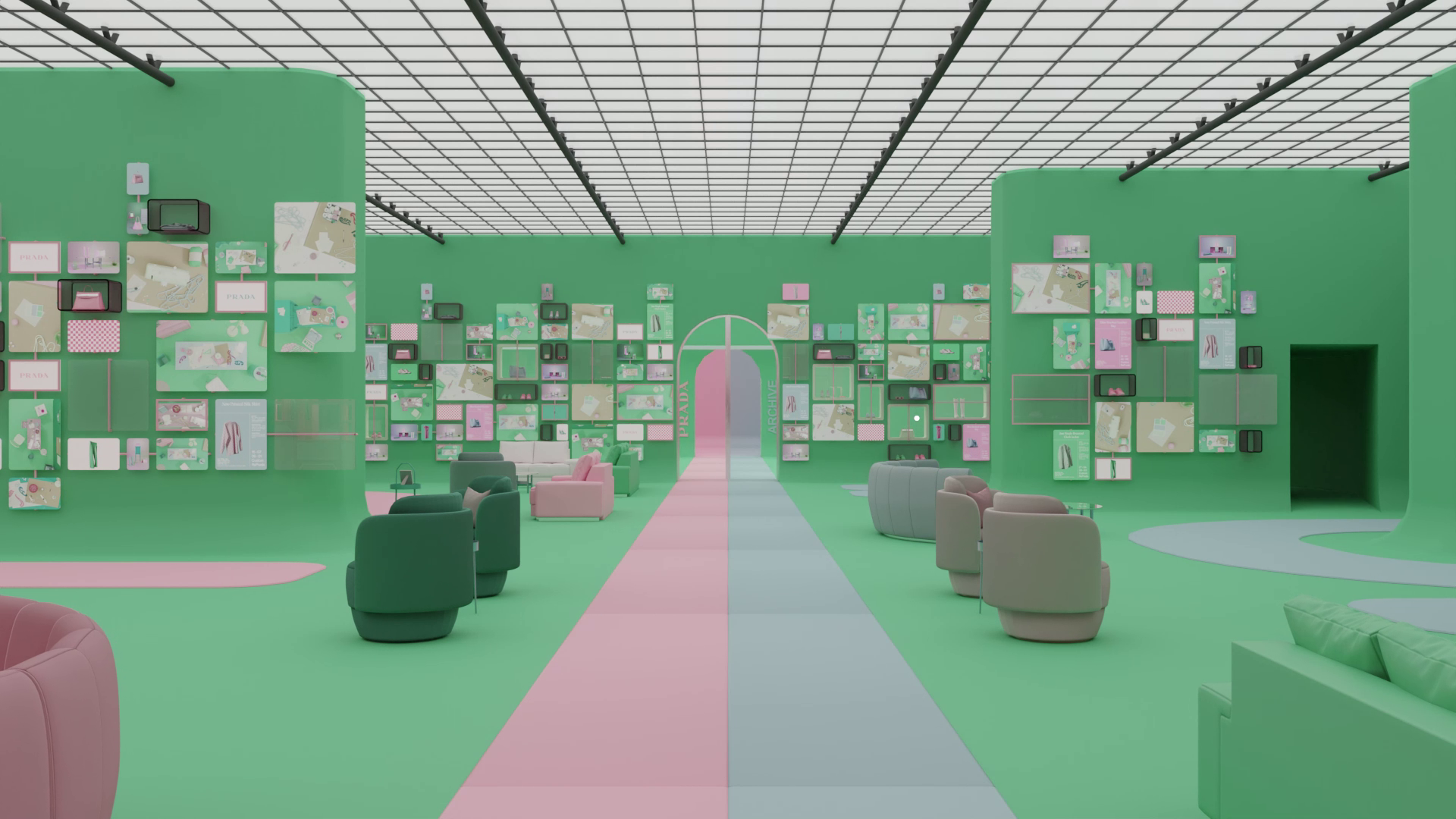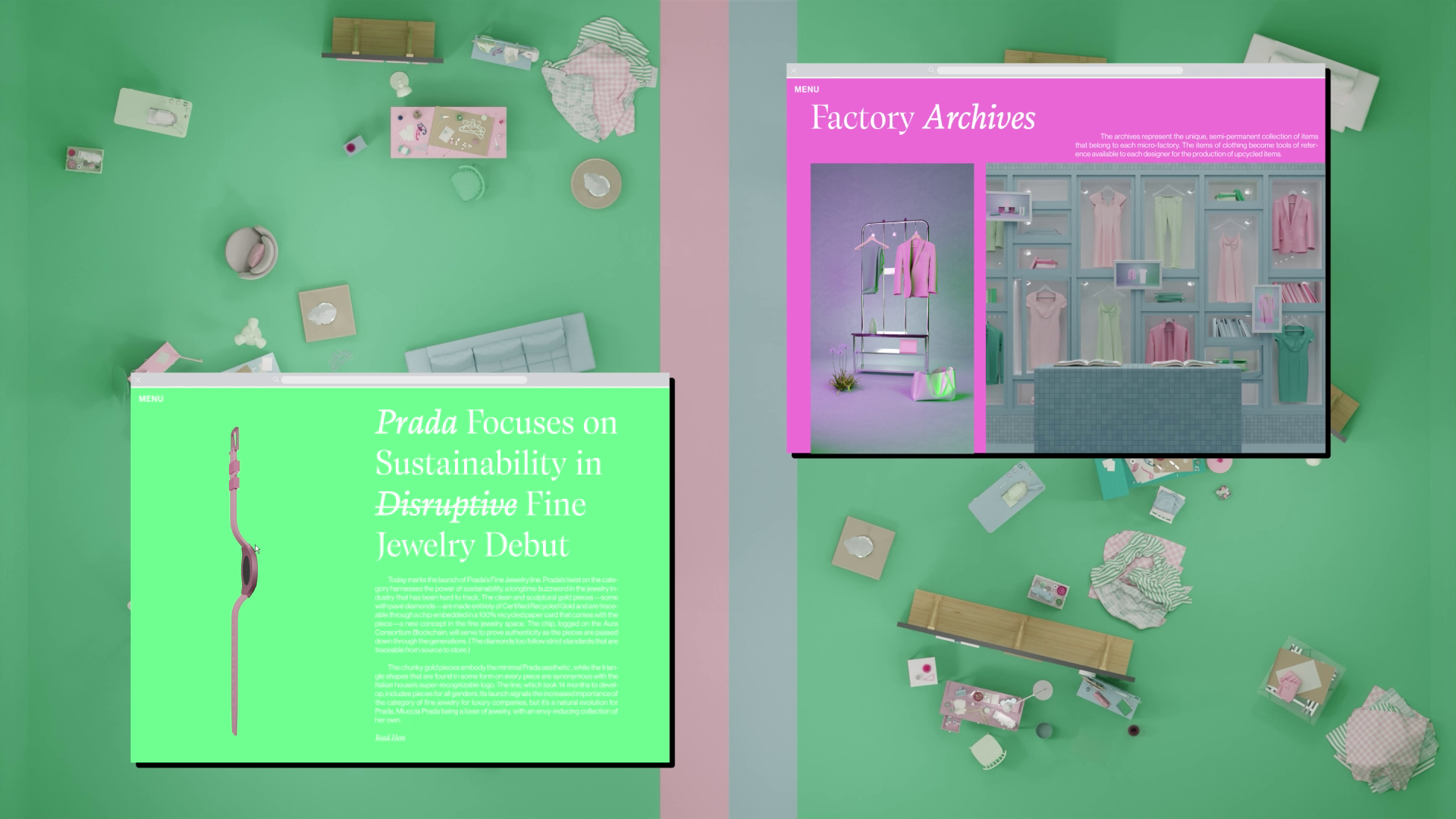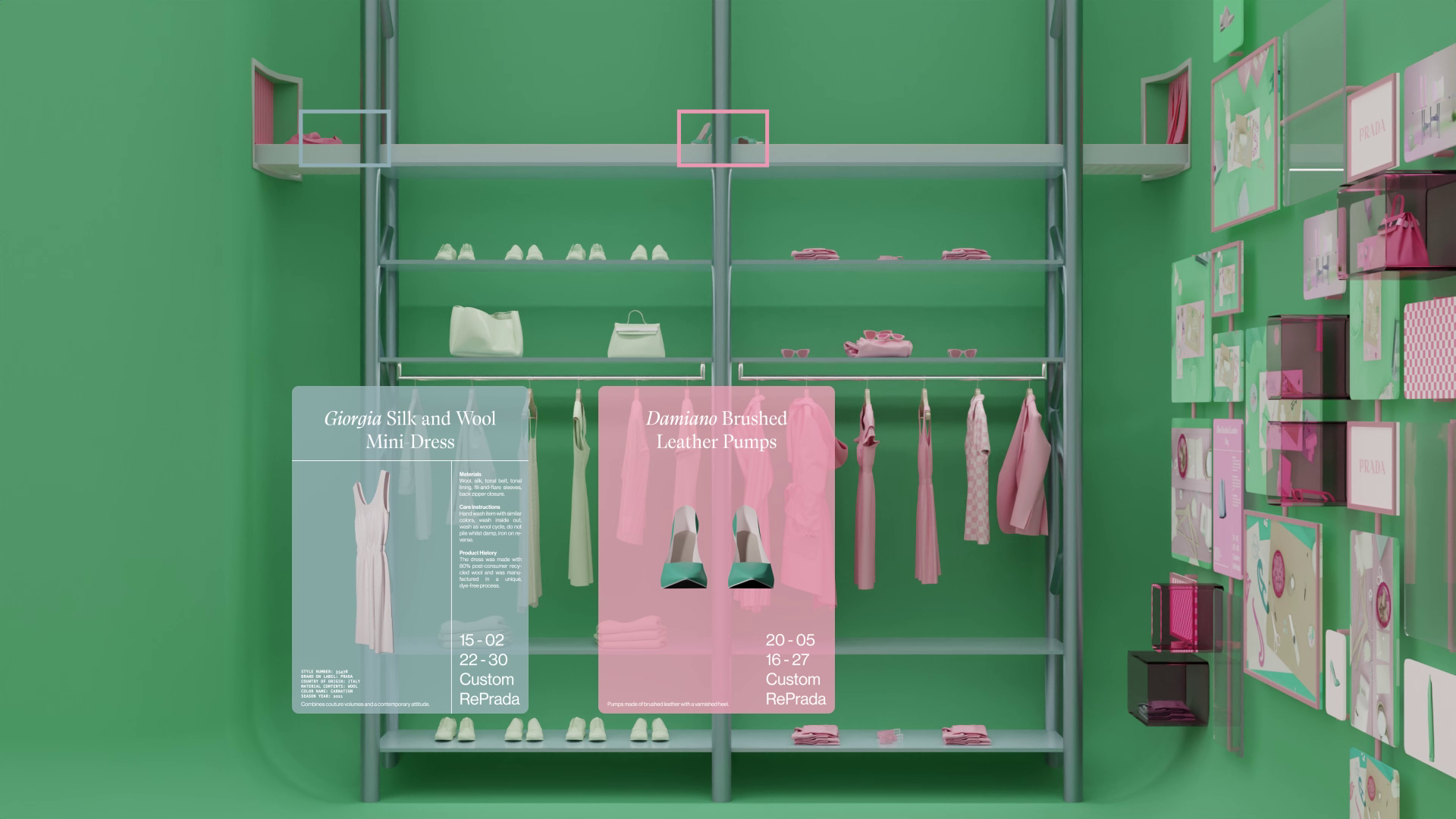It’s All a facade
A new take on the Prada Garden Factory that challenges the relationship between production and consumption. This project proposes a new model for retail and production while proposing sustainable creative strategies without compromising brand history and value.
Medium
Animation, Drawing, Physical Model
Software
Blender, Maxon Cinema 4D, Rhinoceros 3D
REPRADA
A narrative animation created to showcase the new RePrada Microfactory
Microfactory and retail
The objective of the degrowth strategy is to create a continuous loop of production, retail, and upcycling that decreases waste streams and byproducts.
-
Prada would receive deadstock from international markets and worn items from users dropped off through a vitrine system. A portion of the incoming products are Prada, and include digital IDs with metadata and information about previous use and production cycles.es here
-
The items are dropped off at small-scale, artisanal work stations of each designer for upcycling, restoration, and archiving.
-
The upcycled items are then showcased within the space, and stores. Underused infrastructure become the primary vehicle for the production and distribution of clothing items. The back of house operates as a reconfigurable infrastructure for arranging runways and production.
-
The upcycled items are subsequently displayed in the interior for retail in the shelving and screen system that conforms to the vitrine. The participation is facilitated through subscription-based access. The users can shop for products or add products of their own into the system, and items that are not Prada are cataloged into the system.
Vitrine
As a result of our studies into degrowth strategies and upcycled production, our proposal is to not build a factory, but to repurpose existing Prada retail infrastructure.
The retail operations of the store are conducted primarily through the surface of the vitrine. The vitrine, a dynamic, reconfigurable system of cabinets that is serviced by a small-scale conveyor belt, operates as the facade and organizes the interior through the projection of orthographic views. The retail area houses a system of reconfigurable racks, shelves, screens and stations that facilitate the interaction between the user and the items of clothing. Through the screens, the work stations of the designers are live streamed, and users can select an item based on their preferred mode of production.
